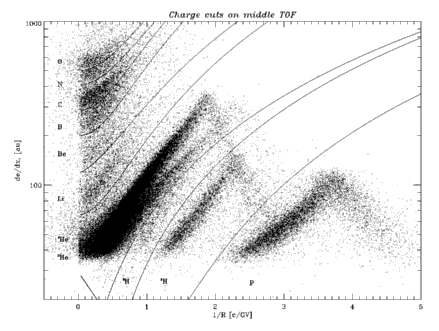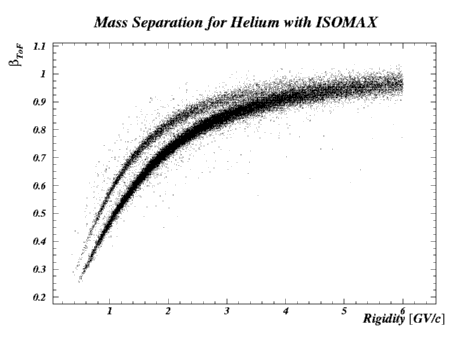This website is kept for archival purposes only and is no longer updated.


| |
- Data - |
|
Welcome Press Release Background Detector Data Collaboration Publications Pictures |
What comes out of itThe first flight of the ISOMAX instrument in August of 1998 proved quite successful and returned a wealth of data which is currently being analyzed. Here are just some examples of that data, which are supposed to give an impression of its overall quality and the analysis-tasks at hand. All pictures here have been produced using a subset of eight hours of flight data.

Clicking on this and any of the other pictures will produce a larger postscript version of the plot.This picture shows the energy deposited by the particles in the scintillators plotted versus the inverse of the magnetic rigidity (momentum per charge) of the particles as measured by the drift chambers. The separation of the different particle species by charge (along the vertical axis) and by mass (along the horizontal axis) is quite apparent, even though this plot shows raw data that has not been processed or cleaned in any form.

In this picture, we show the velocity of Helium particles versus their magnetic rigidity. Again, this is raw data and demonstrates how close to the speed of light we can still clearly distinguish different isotopes of Helium. The focus of the ISOMAX instrument are charges 2 < Z < 9 ; Helium is shown here only because of its high abundance.

|